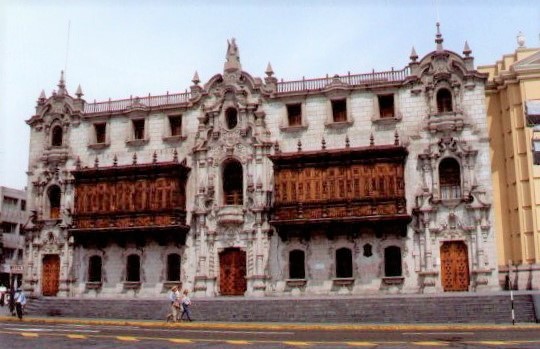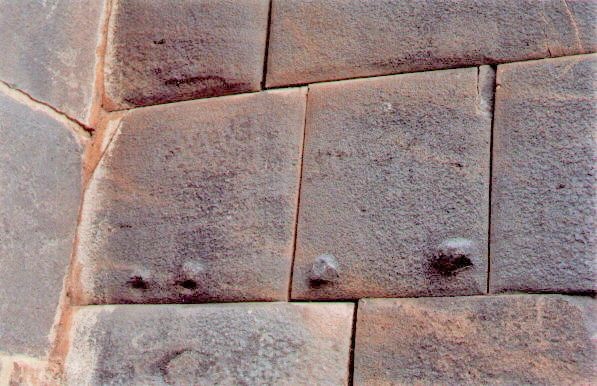I visited Lima on the Pacific Ocean and Iquitos in the western region of Peru near the mouth of
the Amazon River. Lima is the capital and the city of Iquitos is the
farthest the larger ships may travel from the Atlantic Ocean through Brazil and
into Peru, over 2,500 miles! But my main interest was going to Cusco and
seeing Machu Picchu!
Here I am in front of Machu
Pijchu, the Hidden City of the Andes, built about the 1500s AD, please see
 the
map and the geographical
statistics for Peru.
the
map and the geographical
statistics for Peru.
I took the train from Cusco and as I was settling in I saw a man and his wife that I had met in Lima the week before! They asked me if I was going to stay at the hotel over looking the ruins, about 20 rooms? We found out we all were.
Once we got there we took a scary ride in a small vehicle that carried about 10 people. The driver flew up the road that curves back and forth and at times the tires would slide almost off it. When we got there and saw the ruins with the train load of people, we were
ecstatic. But when the train left around three o'clock, there were only six people left in the hotel. The other three had altitude sickness and we never saw them again. The train had problems and didn't come back the next day. We three were alone with the ruins, in seventh heaven. That night we dressed for dinner, the hotel is a two story building with a tin roof. As we went into dinner the Peruvian waiter/host, had on a tuxedo! He seated us, and asked what we wanted. The menu was about 12 inches wide and about 24 inches long, very formal, but only had one type of soup, one main course and one desert on it. We laughed and ordered.
In the middle of the night we heard this horrendous crash and I sat up in bed and looked out the window. A layer of dark clouds just touched the tops of the Andes and the lightning flashed between the mountains and then it rained. My next door neighbors and I got up and went and sat on the terrace and watched the storm. It was fantastic. We said, at least we had a nice day today. Well guess what, the next
morning it was beautiful. We spent another day sight seeing all alone. Wonderful time, people, and wonderful pictures.
A man and his wife that I had met in Lima were on the same
train to Macchu Picchu and we also had the same interests. We were going to
spend several days there.
One day we were
climbing the stairs of the terraces and Bill said he had read an autobiography
written around 1920 about someone visiting Macchu Picchu and they had seen a
snail climbing along the step on the big staircase. His wife suddenly told us to stop! There was a snail on the steps. We
carefully walked around it and couldn't help but laugh:
Was this the
same snail still doing his thing at Macchu Picchu 70 years later?"
I climbed to the top of Wyma Picchu, which means young mountain, Machu means old or so I was told. It is a dangerous climb and you must sign a book just in case you fall the 2000 or more feet down to the river below you! I also walked about 10 kilometers on the Inca Highway going back to Cusco. The road and stone work is amazing.
Discovery of the Ruins!
Led by a Peruvian guide in 1911, American explorer Hiram
Bingham made his way through the jungle and up the mountain.
Suddenly, high up on the knife's edge of a mountain range,
Bingham came upon a lost mountain city. Decayed and overgrown though it was,
Bingham was impressed by the incredible stonework.
It was, he said, "one of the finest examples of masonry I
had ever seen. Clearly it was the work of a master artist." The Inca city,
called Machu Picchu -- though its original name is unknown -- is 8,000 feet
above sea level and about 50 miles northwest of Cuzco, the ancient Inca capital.
The fortified town had temples, plazas, houses, terraces for farming and
aqueducts for water. It was connected with Cuzco by a rugged, mountain road.
Perhaps some of the Incas found refuge in Machu Picchu when the Spanish
overthrew the Inca empire in the 16th Century. But while the Spanish had heard
rumors of a hidden Inca city, they never found it.
Sacsayhuaman
We also visited an Inca site above Cusco whose name, Sacsayhuaman, can be remembered as sounding like
"sexy woman". This site was built as a defensive wall consisting of three tiers of stones, some fifteen by ten feet in size. It is one of the most amazing works in stone!

So
here I
am in one of the doorways to the terraces of Sacsayhuaan! This ruin is the most
spectacular outside of Cusco. Even though it seems large, only 20% is
original.
After the Spanish conquest, they tore own many walls and used
the blocks to build their houses in Cusco. They left the largest because they
couldn't move them, one weights over 300 tons!
The Incas envisioned Cuzco in the shape of a puma with
Sacsayhuaman as the head. The site is essentially three different areas, the
most obvious being the three-tiered zigzag walls of the main fortifications.
Most of them form part of the main battlements. The 22 zigzags form the teeth of
the puma.
The fort was the site of one of the most bitter battles of the
Spanish conquest. About 2 1/2 years after Pizarro's entry into Cuzco, the
rebellious Manco Inca recaptured the lightly guarded Sacsayhaman and used it as
a base to nearly defeat the Spanish.
Only a last-ditch effort by 50 Spanish Calvary led by Juan
Pizarro succeeded in putting an end to the rebellion. The thousands of dead
littering the site attracted swarms of Andean condors, hence the inclusion of
eight condors in the Cusco's coat of arms.

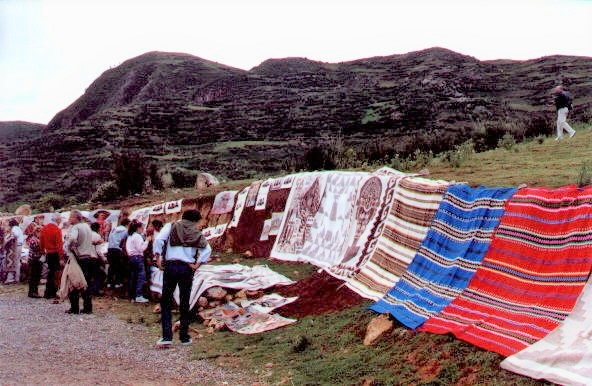




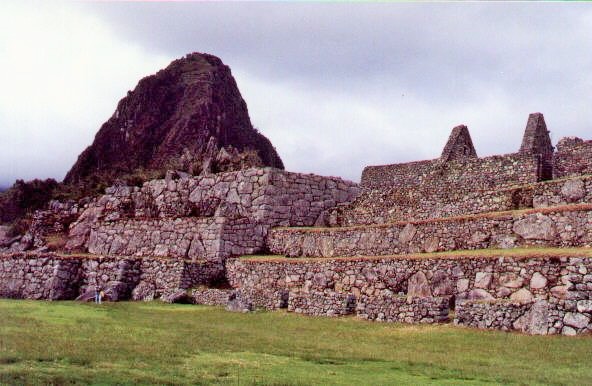

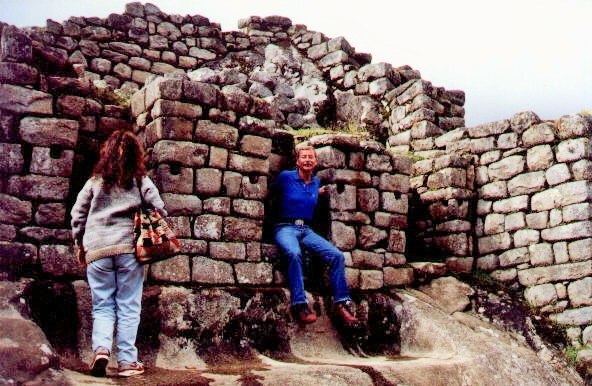


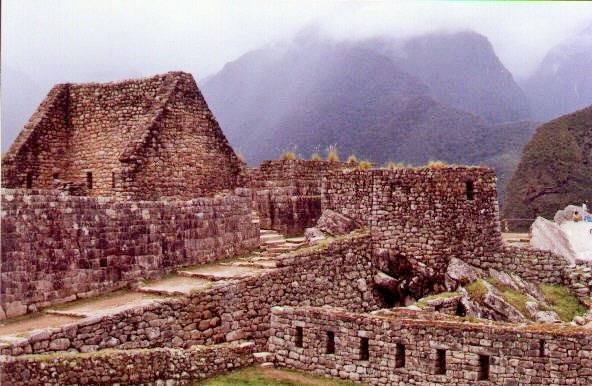
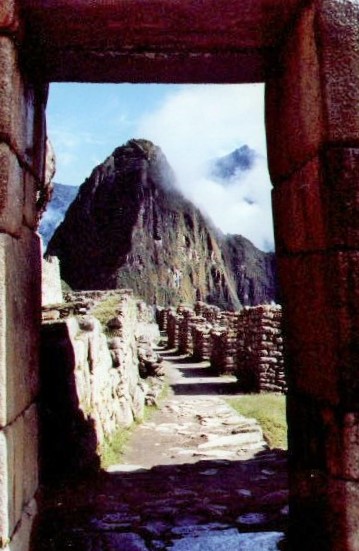








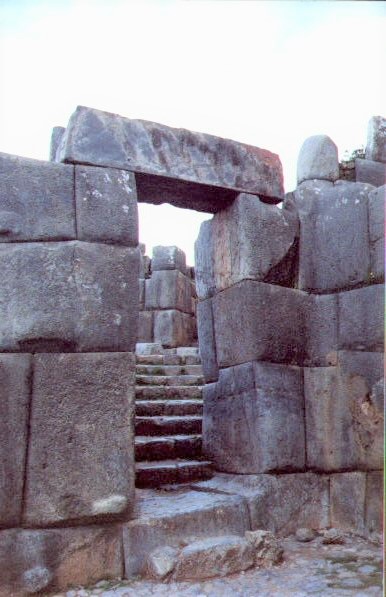





 the
the






